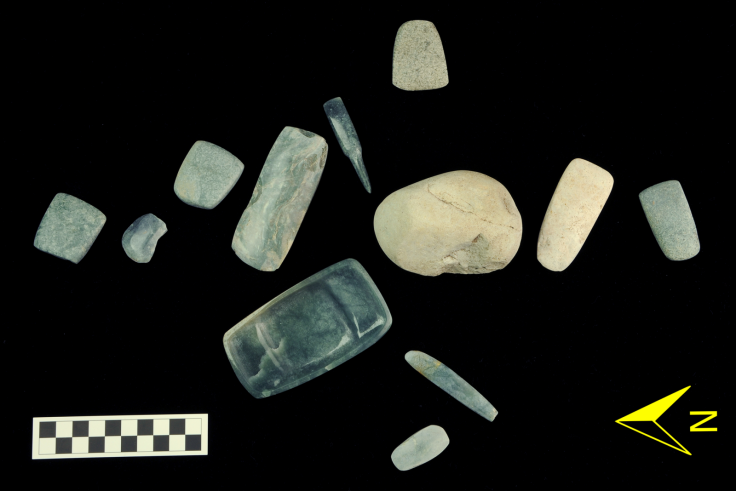“Ideology, expressed in material form and through aspects of public rituals and public ceremonial structures, played a significant role in the development of Maya rulership.” – Kazuo Aoyama of Ibaraki University, Japan.

PHOTO: ibtimes.co.uk
CEIBAL, GUATEMALA – archaeologist Kazuo Aoyama was excavating a key Mayan settlement when he discovered a cache of ritual greenstones dating back to 1000 BC. They’re elongated objects that historians call “celts”, and were historically used in ancient public ceremonies.
This find is especially important because it’s so old. It dates back to an early time in Mayan history that most historians don’t understand very well. Many of the artifacts and remains this old are nearly impossible to uncover, buried beneath layers of younger artifacts and modern developments. This discovery has given archaeologists vital insight into early Mayan culture.
They found a total of 18 caches in the ground filled with 72 polished greenstone celts. It’s the largest find of celts in the Mayan lowlands dating back this far ever found.
Mayans prized greenstones. Their color was thought to be spiritually significant to the early Maya, who associated the color green with the center of the world.
“Among the items highly prized by pre-Columbian Mesoamerican people were objects carved in hard greenstone,” Kazuo Aoyama wrote in his paper in Antiquity, “The polished greenstone celts from Ceibal were manufactured from jade, metagabbro, serpentine and other metamorphic greenstone.”
After analyzing the stones, Aoyama was able to determine that the stones weren’t worn as ornaments. Rather, he believes they were used in ceremonies that the ancient Maya held to determine their elite rulers of pre-classical Mayan society. The vast majority of the celts were buried in the center plaza of the settlement, suggesting that they played a major political role in the community.
“Many of the celts were made specifically for ritual purposes, although a smaller number of them were used for wood carving,” Aoyoma wrote, “The emerging elite probably played a primary role in these rituals, setting a template for later public events centred on rulers.”
Their ritual significance becomes even clearer when you take into account that most of the stones were buried in cross-shaped caches that aligned with the four major directions. The Maya believed that the movement of the Sun across the sky was especially significant, and buried their dead (and their ritual stones) along this axis.
It was this attention to ideology, religion, and ritual that allowed the Maya elite to establish themselves as rulers, and create a powerful, unified culture that would last thousands of years. They would go on to develop the first written script in the Americas, spread to encompass all of southeastern Mexico, all of Guatemala and Belize, and the western part of Honduras and El Salvador. They bound their vast empire together through belief in a single “divine king” who ruled through ritual and war, using stones just like the greenstones found in Ceibal to signify his power (among other artifacts). This knowledge isn’t new, but at last, we’re beginning to uncover the origins of some of the most basic beliefs of the ancient Maya people.


